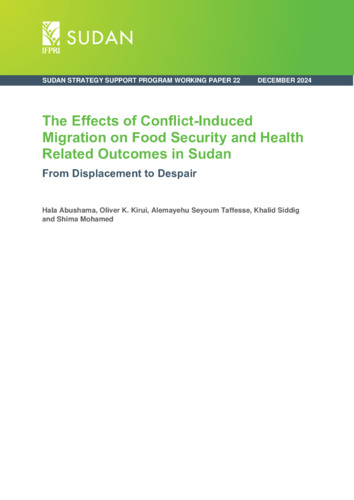Publications

Working Paper
Under the gun: Military and paramilitary actors in Sudan’s agri-food system

Working Paper
The effects of conflict-induced migration on food security and health related outcomes in Sudan: From displacement to despair

Brief
Impact of conflict on employment, income, and household welfare in Sudan
Blogs

مؤتمر: استكشاف أبعاد الصراع في السودان – رؤى بحثية وتداعيات السياسات
Assessing impacts of war and resilience strategies.

Conference: Navigating Sudan’s conflict – research insights and policy implications
Assessing impacts of war and resilience strategies.

Sudan’s ongoing conflict disrupts agrifood processing and aggravates unemployment
Food system impacts of war,
Events

Navigating Sudan’s Conflict: Research Insights and Policy Implications
Hybrid Event: March 5, 2024 at 8:00am-6:00pm EAT / 12:00am – 10:00am EST. IFPRI and UNDP have partnered for this event on wide-ranging and in-depth analysis to better understand the socioeconomic impact of the war in Sudan, and to inform policy and programmatic recommendations.




